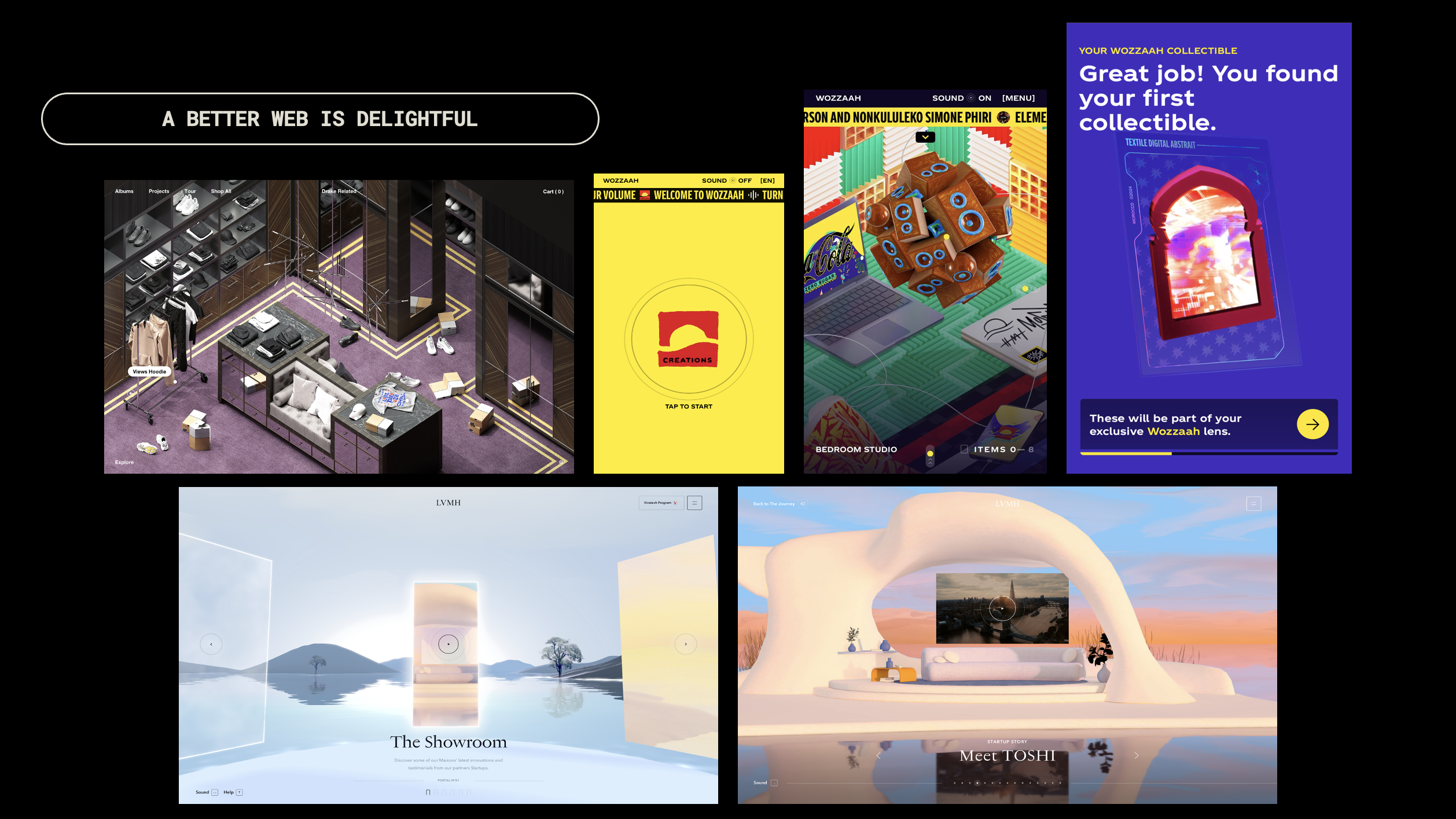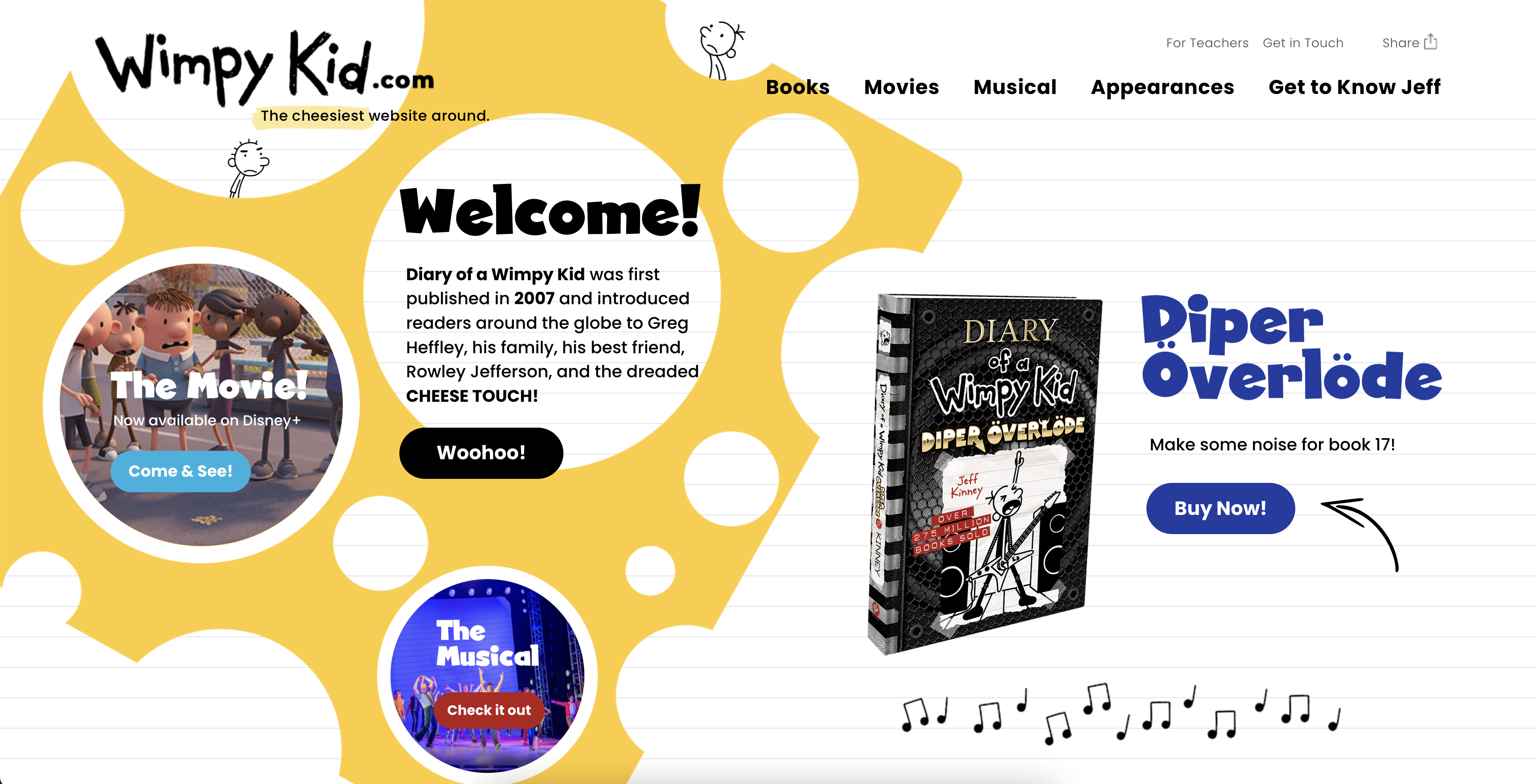
Most websites are built like billboards—linear, transactional, and predictable. Despite decades of innovation, our online interactions remain essentially the same: we scroll, we click, we navigate pages with a similar structure. And in the process, we’re bombarded by pop-ups, banners, and algorithm-driven noise.
But what if a website could be something more? What if it could be a world of its own, designed for exploration, surprise, and delight?
Welcome to the world of spatial website design, where a site isn’t just a page—it’s a place. A digital environment that users enter, experience, and return to, eager for more.
A Web Worth Visiting
The internet is vast—over 67% of the world’s population is online, and 96% of U.S. adults use it daily. In the early days, people returned to their favorite websites to see what was new. But that sense of magic has faded. We no longer visit websites— we're funneled through algorithm-driven feeds, barely pausing on a web page before the scroll pulls us onward.
The question is: how do we make the web a place worth returning to?
Spatial web design flips that script. It invites users into immersive digital environments that evolve, where every interaction feels intentional and rewarding. Instead of passively absorbing content, visitors explore a world crafted around a brand’s personality and story.
Imagine a site that feels like an interactive art gallery—where each scroll reveals something unexpected—or a virtual amusement park with secret doors, playful animations, and immersive soundscapes. Surprises unfold as you move, and every detail tells part of a narrative.
A fantastic example is Bruno Simon’s portfolio, where users drive a tiny car through a 3D world to discover his projects. Another example is Prada’s recent campaign site, where clicking and dragging elements unlocks beautifully crafted stories, much like wandering through a conceptual fashion exhibit. These spaces don't just showcase work—they invite participation, curiosity, and play.

At eDesign, we draw inspiration from old-school point-and-click adventure games, immersive DVD menus, and even nostalgic web experiments from the early 2000s. Modern examples include sites like Drake’s, which presents a digital space filled with interactive elements tied to his world, or Coca-Cola’s “Wozzaah” an immersive mobile experience celebrating African culture through audiovisual content and customizable Snapchat lenses curated by global music sensation Uncle Waffles.
Another example is The Frost King House, an award-winning interactive tool we designed for homeowners. Knowing that Frost King’s customers actively seek out “how to” content and practical advice, we created a virtual home they could explore. Each room pinpoints common energy inefficiencies, paired with quick DIY tips. This experience doesn’t just present information—it invites the user into a problem-solving journey across the home. It’s educational, spatially interactive, and deeply user-driven.

We also built the digital home of Wimpy Kid, crafting a vibrant universe that captures the fun and adventure of the beloved book series. With games, news, and book updates woven into the site, fans return again and again to explore. It’s a playground of stories and surprises, turning the website into a destination rather than a stopover.
What these experiences share is a deep sense of play. Instead of optimizing for conversions and clicks, spatial web design prioritizes curiosity and engagement. Hover effects, ambient soundscapes, hidden easter eggs—these aren’t just gimmicks; they foster an emotional connection between the user and the brand.

Web Spaces, Not Web Pages
Spatial design challenges the conventional website structure. It encourages brands to move beyond static templates and create narrative environments—living, breathing spaces that unfold with each visit.
One of our earliest and most enduring examples of spatial design is the website for Alaska Vodka. Over a decade later, it still holds its visual and experiential edge. Viewers can follow a rugged mountain expedition to Denali, navigating icy peaks and feeling the brand’s adventurous spirit. It was one of the first projects where we treated a website as a landscape—a digital space to traverse—and it laid the foundation for everything we’ve built since.

Or take our concept for the Memphis Grizzlies' anniversary campaign: a digital cave inspired by a grizzly’s den, reimagined through the lens of early-2000s nostalgia. Every object in the room—the torn basketballs, a calendar filled with hand-drawn notes, a record player playing team anthems— tells part of the story. Even sponsorships become experiential: a pizza box doubles as a vinyl player that leads to a Spotify playlist, transforming a simple ad placement into an invitation to engage. This is how spatial web design turns storytelling into interaction.
Our collaboration with ThirdLove, the innovative lingerie brand championing body positivity and size inclusivity, exemplifies this approach. We brought their FitFinder quiz to life through elegant 3D animations and a dynamic virtual fitting room experience. The result is more than a quiz—it’s a guided, visually rich journey that helps users see themselves in the product and confidently choose the perfect fit. It's spatial design in action: intuitive, personal, and empowering.
Brands can regularly update their environments, adding new elements, shifting layouts, and encouraging return visits. Because when users step into a space that captivates them, they don’t just remember it—they return, again and again.

From Gamification to Emotional Design
Spatial web design is more than aesthetic—it’s a strategic rethink of digital engagement. It borrows from game design, offering users a reason to stay, play, and return. It centers on discovery, not just delivery. It emphasizes storytelling, turning a brand’s digital presence into a living, breathing world.
Instead of static content, users move through a story that unfolds around them. With responsive animations, evolving layouts, and layered details, spatial websites transform the digital journey into a personal experience. Visitors stop consuming and start exploring.
This isn’t the metaverse. It’s not VR or escapism. We’re simply building a better internet. An internet that feels more like a place you want to be, not a place to get through.
A website doesn’t have to be an endless churn of clickbait and banner ads; it can be an experience that surprises, delights, and brings people back for more.
Let’s Build a Web People Love
The future of web design isn’t flat—it’s dimensional. It invites users to touch, feel, and return. Spatial websites don’t just inform; they immerse. They create joy, spark emotion, and turn digital engagement into a meaningful experience.
It’s time we stop designing pages and start building spaces. Let’s make the web a place people enjoy!
For advice on your next project, contact our web experts in New Jersey.